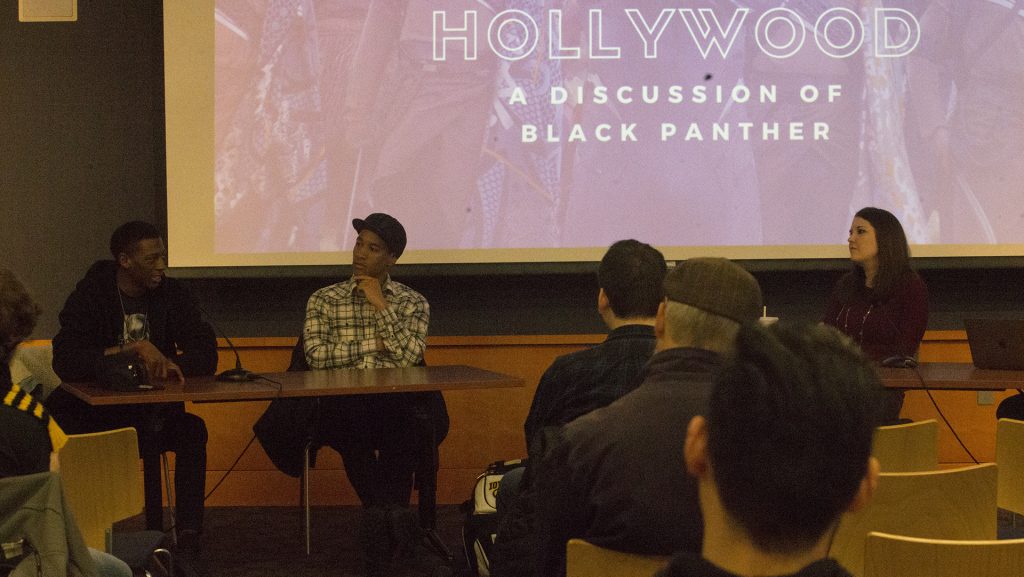In the Iowa City Public Library on Sunday, people gathered to discuss the third-highest grossing movie of all time in the U.S. and its impact on Hollywood.
Project C+B, a fledgling organization started b y recent UI graduate Dan Stolley, hosted the panel discussion about the movie Black Panther and representation in the film industry.
“Wakanda to Hollywood: A Discussion of Black Panther” is Project C+B’s first event. Stolley said the project originated as creating a way to give people access to types of media that they can see and potentially be in, hence the name C+B.
While he isn’t there yet, Stolley said, he eventually wants to show free screenings of films such as Black Panther and Wonder Woman and host readings of diverse works.
“That’s ultimately what I want to build up to, is being able to provide the community with a way to have conversations about these things but also access these things,” he said.
Stolley moderated the discussion among three panelists, communications-studies TA Meg Tully, Afro House coordinator Jamal Nelson, and spoken-word artist Caleb “The Negro Artist” Rainey. Each voiced her or his unique perspectives on the film and talked about how it affects and reflects society.
The first topic covered was what led to Black Panther s success, including previous TV shows and movies that may have paved the way to more diverse media.
Nelson noted such Disney movies as Moana showing younger audiences diverse characters, and Rainey talked about the TV show “Black-ish” and Wonder Woman influencing aspects of Black Panther’s story, such as the focus on strong female characters and willingness to touch on sensitive topics.
RELATED: Smith: The Black Super Hero
Callout culture on Twitter was also discussed, with the panelists agreeing that the new ability for filmmakers to be held accountable by the public will help to create better written characters and story lines.
“Fear of backlash in the world we live in now is much stronger than it has been in the past, where you can get away with doing some things that were cringe-worthy on the screen …” Rainey said. “But now there is that power of backlash, so if you do mess up, everyone’s going to let you know you messed up, and I think that’s really good.”
The discussion then turned to specific parts of the film and the social issues it ad dressed.
Erik “Killmonger,” the villain of the story, was the most discussed, with each panelist offering her or his opinions about why he acted the way he did, the disconnect between his supposed beliefs and actions, and how he became a sympathetic villain.
Rainey said Killmonger was a product of the life he grew up in, and that by trying to weaponize Black populations around the globe but not allowing anyone to have the power of the heart-shaped herb, he proved that he only wanted power for himself instead of freedom for everyone.
Tully noted Killmonger’s dismissal of black women throughout the film, which led to his downfall.
“I thought it was really interesting, for supposedly really wanting to help all black people, it wasn’t actually all,” she said.
To round up the discussion, Stolley asked the panelists about the future of Hollywood after Black Panther.
“I found that this is a beautiful opening for people to really jump on and change the narrative we see for younger ones …” he said. “When I get older and have kids, they’re going to watch this with me because this is my Star Wars.”



